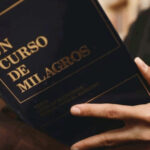Before you even start searching for the books you’ve chosen to collect I advise you to familiarise yourself with the jargon of the book dealing un curso de milagros community. It will certainly help you avoid the disappointment of receiving a book that doesn’t meet your expectations. Most dealers in collectible books use standard terminology and abbreviations when describing the format and condition of the books they list and it can often seem like a foreign language to the virgin collector. A good online source for book terminology is the Independent Online Booksellers Association (IOBA) who have developed a thorough Glossary of Book Terminology. You can access their glossary via my website – Reading Habit – of which there is a link below.
If you’d rather purchase a hard copy reference on book terminology and book collecting in general, my recommendation for those just starting out is the ABC for Book Collectors by John Carter. This classic has long been a must have for beginner and experienced book collectors alike. Whilst a newer edition of the book is preferable, any edition would be useful as a start-off point. All entries are listed alphabetically making it super easy to use. I still use my copy quite frequently, so it will definitely be a good long-term investment.
When book dealers list the condition of a book it is usually in the form of VG/VG, Fine/Good, VG/–, etc. The first part is the condition of the book, the second is the condition of the dust jacket. If a “/–” is present, it usually means that the dust jacket is missing/unavailable. If there is no second part at all this normally indicates the book was not issued with a dust jacket. As a guide, most book dealers use the following condition terms. The book condition definitions are meant as a guide only and buyers should be aware that all sellers will have slightly different interpretations.
Good book descriptions should always include specific details on defects rather than just generic statements like “may show general wear and tear”. The use of this kind of phrase with specific details is fine, but is bad practice when used in isolation. If you are ever unsure what a seller means by a term they are using to describe a book, we encourage you to ask them directly for clarification, or request that images of the book be sent.
New – A new book is unread, in print and in perfect condition with no missing or damaged pages.
As New – A book that is in the same immaculate condition to which it was published with no defects, no missing pages, no library stamps, etc., and the dust jacket must be perfect without any tears.
Fine (F or FN) – Approaches the condition of As New, but without being crisp. There must also be no defects and if the jacket has a small tear, or other defect, or looks worn, this should be noted.
Very Good (VG) – A book that does show some small signs of wear, but no tears, on either binding or paper.
Good (G) – Describes the average used worn book that has all pages or leaves present. Defects must be noted.
Fair – Worn book that has complete text pages (including those with maps or plates) but may lack endpapers, half-title, etc. (which must be noted). Binding, jacket (if any), etc., may also be worn. Defects must be noted.


